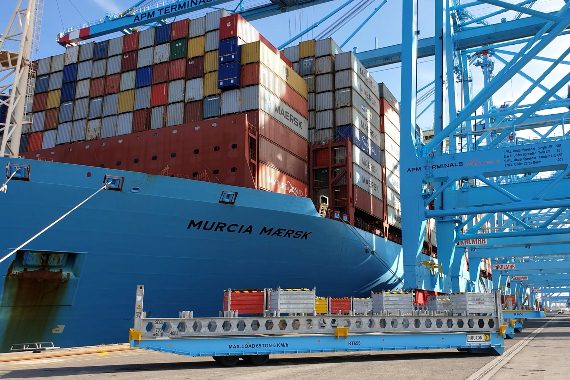-
Shenzhen reopens government offices and businesses in five key districts on March 18 as China’s southern industrial hub battles wave of coronavirus infection
-
Other port cities such as Shanghai, Xiamen, Ningbo and hardest-hit Jilin are still in a lockdown, but cargo keep moving, according to reports
-
Maersk says in its March 17 update terminals in Greater China Area’s main ports are open with usual ship operation, yard handling and gate-in, gate-out going on
China’s third busiest port city, Shenzhen, reopened government agencies, public institutions and businesses in five key industrial districts on March 18 as the southern gateway continued to battle a new wave of coronavirus infection gripping key coastal cities.
The municipal government of Shenzhen said Yantian, Pingshan and Guangming, Dapeng New Area, and Shenshan Special Cooperation Zone would resume normal operations on Friday, with metro and bus services resuming as they had recorded dynamic zero infection.
Huang Qiang, deputy secretary-general of the Shenzhen Municipal Government, told the press on Thursday the city would enhance targeted services for enterprises and address their practical needs amid the latest wave of COVID-19 fueled by the Omicron variant. On Friday, the city reported 91 new infections, down 92 the previous day.
Apple supplier Foxconn has put in place its campus in the technology hub next to Hong Kong in a Covid-19 “bubble” that will allow it to resume production until at least Sunday, Reuters reported, citing an internal document it had seen.
The news agency said United Parcel Service Inc also suspended all pickup, delivery and self-pickup services in Shenzhen and neighboring Dongguan amid strict restrictions imposed to curb the outbreak.
Shenzhen authorities, meanwhile, implemented closed-loop management measures at its checkpoints for cross-border shipping with Hong Kong to better protect the transportation of food supplies and epidemic prevention materials bound for that city.
All cross-border trucks have to follow a centralized transfer in three designated checkpoints at Wenjindu, Huanggang and Shenzhen Bay after entering Shenzhen. The cross-border drivers are required to hand over the trucks to local drivers at the checkpoints.
The Hong Kong cross-border drivers are required to provide a negative 24-hour nucleic acid test certificate to enter Shenzhen and take nucleic acid tests each time they enter the city.
This early, it may be hard to find out the impact of lockdowns in Shenzhen and other Chinese business and industrial hubs like Shanghai, Jilin, Xiamen on China’s economy.
But analysts at US banking group Citi predicted in a report Tuesday that the mainland’s latest Covid-19 outbreak could hit first-quarter gross domestic product by at least 0.5 percentage point due to the forced closure of some of its manufacturing hubs.
The most affected regions including Shanghai and Shenzhen account for 16.7% of national GDP, Citi estimates. Shanghai and Yantian ports are known as two of the electronics export hubs in the world, but they ship out a lot more goods other than electronics.
Elon Musk, developer of the Tesla battery-powered car, does the final assembly of the Tesla Model 3 and Tesla Model Y in the Giga Shanghai factory operated by Tesla Inc.
Data provider Statista said that in 2021, China exported around 402,000 commercial vehicles and 1.5 million passenger vehicles, representing 111% and 71% year on year.
These vehicles were mainly produced by the top Chinese carmakers Brilliance Auto Group based in Shenyang, Liaoning province, FAW with its main factory in Changchun, Jilin, and Great Wall, which produces from its base in Baoding, Hebei.
Throughout the lockdown, port operations were normal, according to Maersk, the second-largest container liner that services China’s main ports.
Maersk said in its March 17 update that at terminals in Greater China Area main ports were open, including vessel operation, yard handling and gate-in and gate-out gong on.
The company forecast that vessel waiting time will increase in Yantian and Chiwan ports on the Pearl River Delta. But it expects vessel call and departure times to remain normal.
Maersk said depots for empty and returned containers in Shenzhen remain closed from March 15 until further notice.
Warehouses in Shenzhen will remain closed from March 14 to 20, Maersk said. Those in Qingdao and Xiamen are still operating. In Shanghai, warehouses are also open but, as in other ports,negative swab test results and health code are required for cargo delivery.





